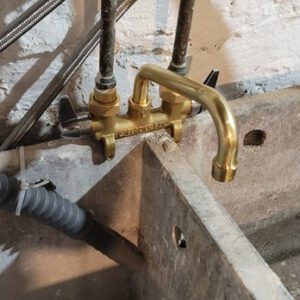Plumbing is an industry that handles the conveyance of fluids from one place to another. This includes the use of pipes, valves, plumbing fixtures, tanks, and other apparatuses. In a nutshell, plumbing is a very diverse field. Plumbing deals with the design and installation of pipes and water systems to provide services to many different types of properties.
There are several institutions involved in the water supply. These institutions are responsible for policy and regulation and providing the services that people use. Some of these institutions are not independent and may have a political agenda. It is important to have a thorough understanding of the institutions involved in the water supply. The following are some basic categories of organizations and their responsibilities.
Water supply: Water supply systems are infrastructure for the collection, transmission, treatment, and distribution of water. Their design depends on the quality and quantity of water that is being supplied. Water supply systems may be private, public, or both. Public water systems are crucial to functioning societies. These systems provide water for public needs, including firefighting and street flushing.
Water pipe materials: Different water lines require different piping materials. For instance, PVC isn’t suitable for hot water lines, while PEX and CVPC are ideal for freshwater lines. Some homes even have multiple materials used for freshwater line piping. It is also important to note that drinking water can cause a buildup inside the pipes. It can cause internal corrosion that reduces pipe diameter and reduces water pressure.
Public health: Public health officials routinely worry about cross-connections in plumbing systems. Some 74 children were sent home with symptoms after drinking contaminated water. While water supply is essential to life, there are many risks associated with it.
The water pipe delivery system consists of water pipes, fittings, and service valves. Pipes are usually made of metal or plastic and can range in size from 1/2 inch to four inches. Steel pipes are the strongest and most durable. They are also relatively lightweight.
In plumbing, the drainage system is responsible for carrying used water away from the home. The system is made up of pipes, tanks, fittings, and other components that move water and waste away from home. The system must be designed so that used water does not contaminate clean water. A poorly designed drainage system can lead to the pooling of water in your property, mold growth, and other problems.
Many people often confuse drainage with plumbing. However, the two systems are very different. This confusion can result in homeowners not knowing who to call when they experience a drainage emergency. For example, a general plumber may be unable to diagnose or resolve a drainage emergency because they are not trained in specific types of plumbing.
Fortunately, drain cleanouts make it much easier to find problems in the drain line. By installing drain cleanouts, plumbers can access the sewer line and identify the exact cause of a clogged pipe. This can prevent future problems from arising. A cleanout can also help homeowners avoid paying for costly drain repairs.
Depending on your needs, there are many different types of drainage pipes available. One of the most common types is PVC drainage pipe, which is very popular and widely available. It is relatively inexpensive compared to other types of drain pipes. Another type is ABS piping, which is similar to PVC but less popular. Unlike PVC drainage pipes, ABS pipes are not aesthetically pleasing, so they are best used in areas that are difficult to view. Alternatively, you can choose cast iron pipes.
Drainage is a vital part of plumbing, especially for properties in cold climates. Frozen pipes can lead to a home being filled with water, causing thousands of dollars in damages.
